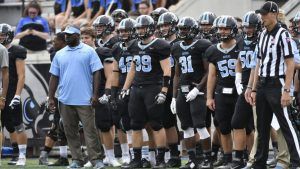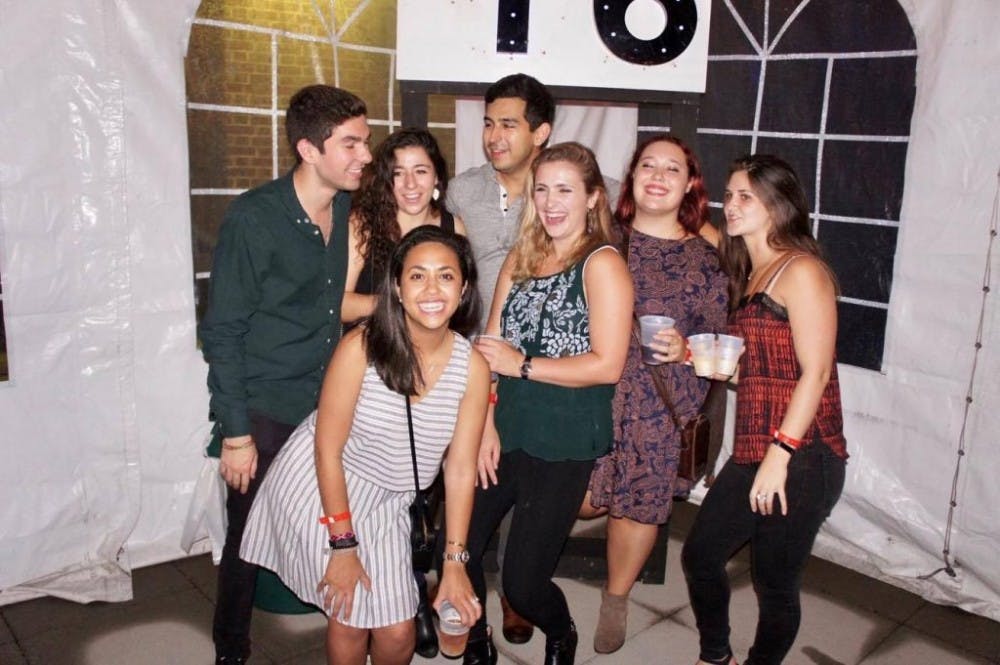The University’s annual Young Alumni Weekend (YAW) drew over 3,000 alumni back to campus for events taking place from Friday, Sept. 30 to Saturday, Oct. 1.
The weekend provided an opportunity for alumni to reconnect with one another, as well a chance for them to mingle with current students and staff. The year’s program featured a number of events celebrating new developments taking place on campus.
As a celebration of the Reserve Officers’ Training Corps’ (ROTC) 100th year at Hopkins, the weekend hosted an ROTC reception at the Glass Pavilion of Levering Hall on Friday evening. Hopkins is distinguished as one of the first American universities to establish the ROTC program.
The reception included a display of memorabilia, photos and historical information on the ROTC program at Hopkins. Young Hwan Joo, a member of the Class of 2009, explained how the event held special significance, as it provided a rare opportunity for ROTC alumni and students to reconvene and also engage the Hopkins community to learn more about the University’s history with ROTC members.
“ROTC builds leaders of the United States,” Joo said. “It builds not just military officers, but also doctors, nurses. There are various jobs that these people do. It’s a way to give back to your country, to your academia. [My days as a part of ROTC] were good times. If I can do it I would do it all over again. It was an integral part of my life.”
Joo went on to reflect how valuable of an experience the University as a whole offered him.
“When I’m here, I’m home,” he said. “It’s that simple. The community is super embracing, somewhere you can always come back to. [Hopkins] just keeps giving and you just want to give back.”
The Office of LGBTQ Life hosted a Pride Gathering on Saturday. The event provided an opportunity for alumni to not only socialize and network with one another as well as with other current students, but also gave them a chance to reflect on the developments that have taken place within the University’s LGBTQ community.
Mariela Pinedo, a member of the Class of 2012, spoke about the strides the University is taking to improve inclusivity of the LGBTQ community.
“[The Office of LGBTQ Life] was not here when I was an undergrad. I don’t think it came about until 2013,” Pinedo said. “Having this space is super important. I think it just brings awareness to the rest of the Hopkins community that this space is necessary and is here, and that anybody that needs it can come here. It is a huge step in not just in pulling in other students who identify as LGBTQ, but also making it aware to other students who aren’t part of the community that when you come to Hopkins this is an okay place for people to come who are part of the community.”
Older alumni provided insight on the tremendous changes that have taken place on campus since their time at the University. Phoung Tran, a member of the Class of 2004, described how hostile the environment was at the University only little over 10 years ago.
“When I was a freshman and we were doing the awareness day with DSAGA (Diverse Sexuality and Gender Alliance) and everything, security guards had to guard us while we were putting up fliers and things,” Tran said. “Our fliers were torn down, defaced and everything — by other students, probably. It was not that friendly of an environment, but it got better over the four years I was there.”
Tran recalled how impressed he was by the rapid developments within the LGBTQ community on campus since his graduation.
“Coming back, when I went to the first YAW, I met the DSAGA board and went, ‘Wow.’ There’s so much diversity on the board,” he said. “[Back then] it was just all white. I was the only Asian or minority in DSAGA until a couple years later. Now there’s everybody. A lot of more people are out. A lot has changed. I like it how it’s a lot more friendly and you no longer have to worry as much. There was not this LGBT life or anything. Actually it was just the office of DSAGA, a smaller club, a tiny office in the bottom of Levering. A lot has changed. And I really like how it has changed.”

Saturday kicked off with a 134-Day Brunch for the Class of 2016 at the Hopkins Club, as well as a home football game between Hopkins and Juniata University. The game ended with the Blue Jays triumphant, as they scored 52-17 against their opponents.
Senior Associate Director of the Homewood Reunion Program Pat Conklin discussed the importance of incorporating athletic events into YAW.
“What we had heard from everybody who was coming back was that they wanted [YAW] wrapped around a football game, a sporting game,” Conklin said. “We wrap Alumni Weekend [in the spring] around lacrosse. That’s the linchpin for the weekend. But as far as the fall, we thought, ‘Alright, we’re going to start doing this with athletics and try to get a group of people at the football games.’”
Though it rained during the game, a considerable number of alumni, students, staff, former staff and parents took up the stands, though in Conklin’s opinion, more would have come out had the weather been fairer.
“It was surprising,” Conklin said. “The stands were I would say half full, even though it was raining. We’re also offering a tailgate so we were in year number two for the tailgate. And because of the rain I think some people just didn’t come out, but we still had a good showing of some of our alums and some of the students. And the parents of the football players really joined in and were very participatory in the tailgate, which was nice.”
The Federal Hill Takeover took place on Friday night, where Hopkins affiliates over the age of 21 were able to convene in four different bars. The event marked a shift from prior years, which brought alumni together at Pratt Street.
Conklin elaborated on the overall significance of YAW, and its role in bringing together members of the Hopkins community.
“We started this program eleven years ago because recent alums—which would be the first four years out—were not really touched by a reunion because reunions are on a five year cycle,” Conklin said. “So basically [after] you graduate you can come back to homecoming. This was just another way to reach out to them and give them a fall experience and let them know that they are important to the university [and] that they are important to the Alumni Association, and it gave them an opportunity to come back and hang out with their friends.”





